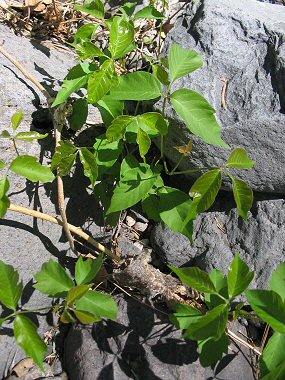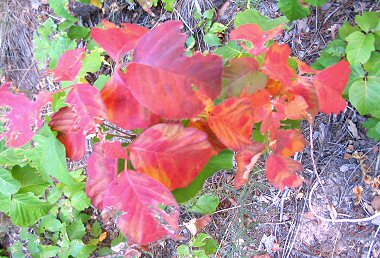Poison Ivy is a member of the Cashew or
Sumac Family. It appears as a
 small
shrub to 2 feet in height or as an ascending vine. Leaves grow in groups
of three to 3 inches in length and can vary from oval and smooth to
notched or toothed. It typically grows in wet areas with good soil in
canyons, ravines and disturbed areas at elevations between 3000 and 8000
feet. small
shrub to 2 feet in height or as an ascending vine. Leaves grow in groups
of three to 3 inches in length and can vary from oval and smooth to
notched or toothed. It typically grows in wet areas with good soil in
canyons, ravines and disturbed areas at elevations between 3000 and 8000
feet.
|
All parts of the Poison Ivy plant
contain an oil that can cause an itchy rash. If you are exposed to
the plant, washing yourself immediately in cold water can mitigate
the worst of the symptoms. |
Poison Ivy blooms between April and September and
produces small, greenish-white flowers to 0.25 inches in width which
grow in loose clusters. In the fall, the leaves turn a reddish orange
(aren't they pretty?).
|

